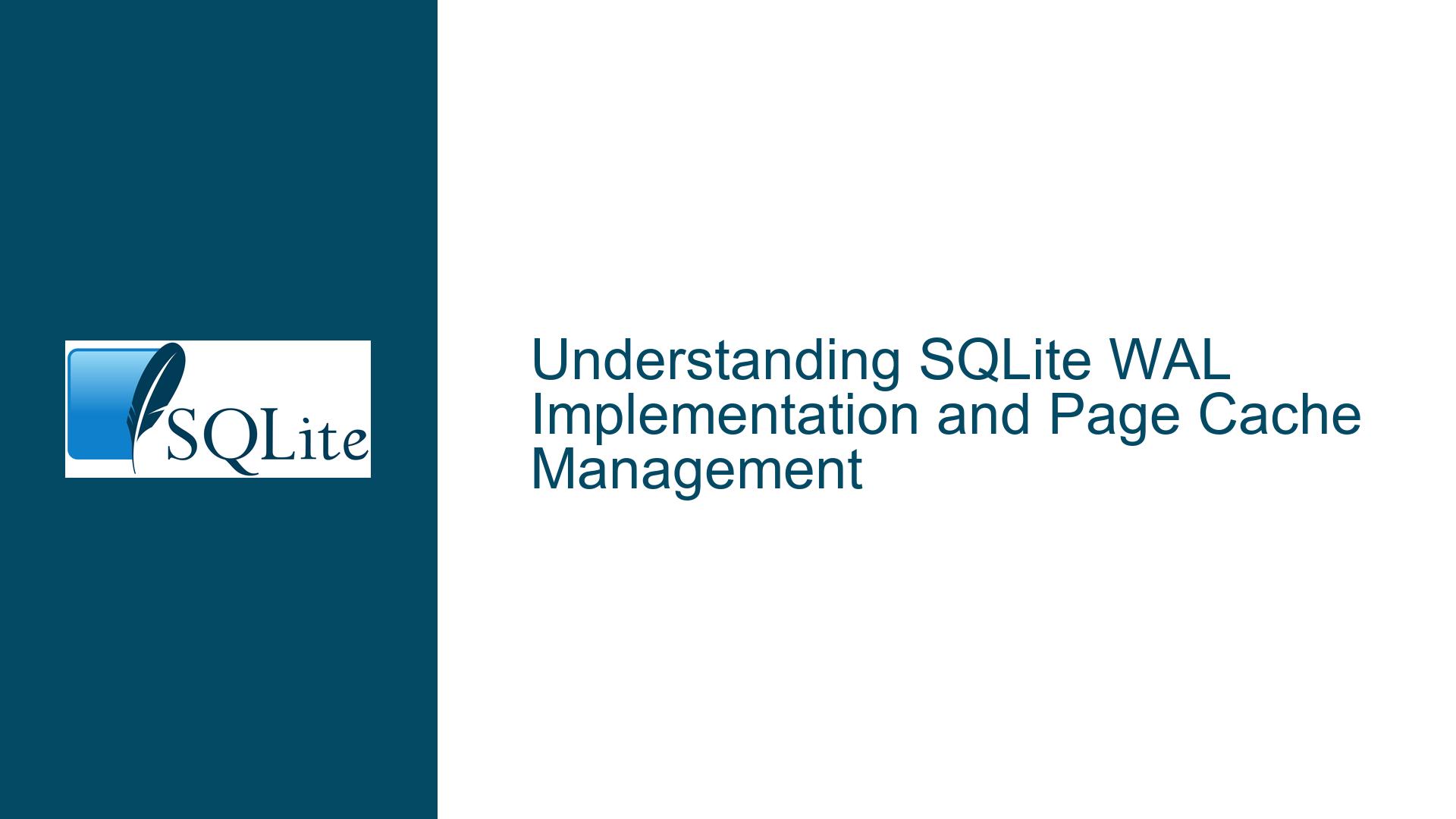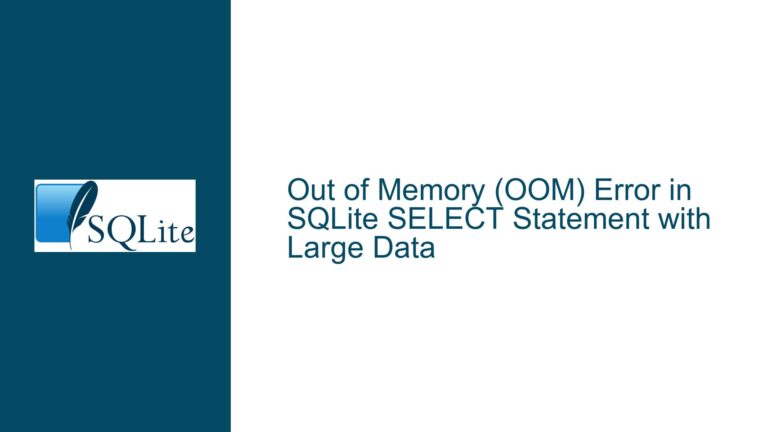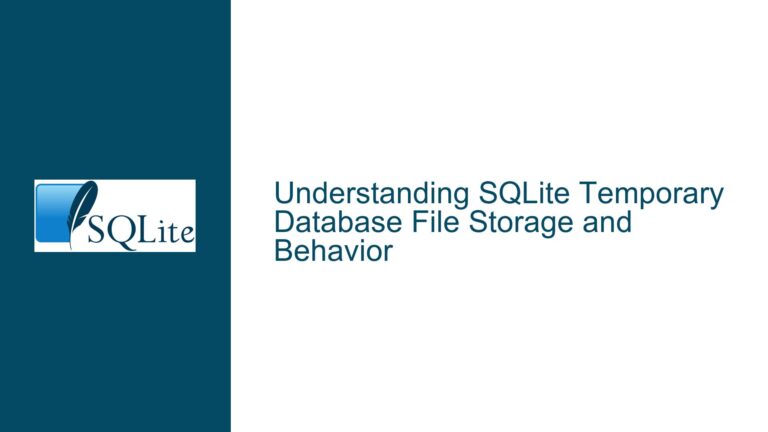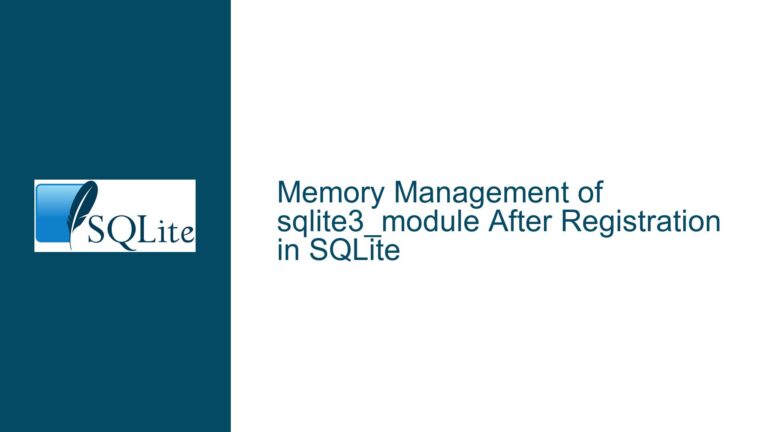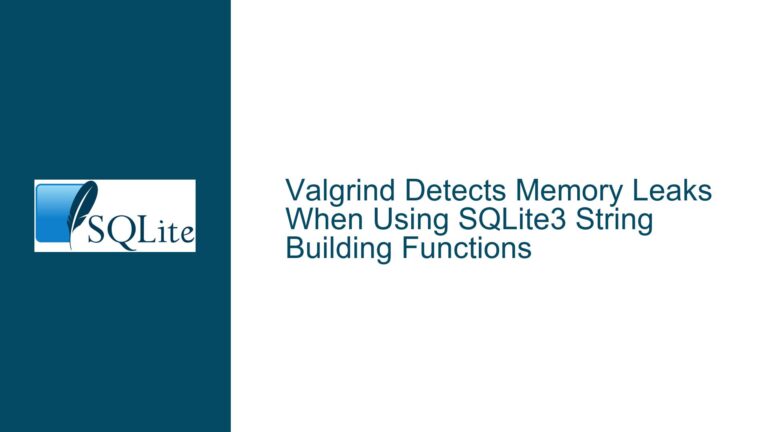SQLite WAL Implementation and Page Cache Management
SQLite Write-Ahead Logging (WAL) Mechanism and Its Implementation
SQLite’s Write-Ahead Logging (WAL) is a pivotal feature that enhances database performance and concurrency. The WAL mechanism allows multiple readers to operate simultaneously while a single writer commits changes without blocking the readers. This is achieved by decoupling the writing process from the reading process, which traditionally required exclusive access to the database file.
The WAL mechanism works by writing changes to a separate log file (the WAL file) before they are applied to the main database file. This log file acts as a buffer, storing all modifications until they are eventually written to the main database in a process called checkpointing. The primary advantage of this approach is that readers can continue to access the database file without being blocked by writers, as they read from the last consistent state of the database before the WAL file was created.
The implementation of WAL in SQLite involves several key components: the WAL file, the shared memory file (SHM), and the checkpointing process. The WAL file contains a sequence of frames, each representing a change to the database. The SHM file is used to coordinate access to the WAL file among multiple processes. The checkpointing process is responsible for transferring the changes from the WAL file to the main database file, ensuring that the database remains consistent.
To delve deeper into the implementation, one must understand the structure of the WAL file. The WAL file begins with a header that contains metadata about the log, such as the version number, the page size, and the checksum algorithm used. Following the header are the frames, each of which contains a page from the database along with a header that specifies the page number and a checksum. The WAL file is append-only, meaning that new frames are added to the end of the file, and old frames are not overwritten.
The shared memory file (SHM) is used to manage access to the WAL file. It contains a set of locks and counters that coordinate the activities of multiple processes accessing the database. For example, the SHM file includes a read-lock that prevents readers from accessing frames that are being written by a writer. It also includes a write-lock that ensures only one writer can append frames to the WAL file at a time.
Checkpointing is the process of transferring changes from the WAL file to the main database file. This process can be triggered manually or automatically, depending on the configuration. During checkpointing, SQLite reads the frames from the WAL file and applies them to the corresponding pages in the main database file. Once the changes are applied, the WAL file is truncated, and the checkpoint is complete.
Understanding the WAL mechanism requires a thorough examination of the SQLite source code, particularly the wal.c file, which contains the implementation of the WAL module. The source code includes detailed comments that explain the purpose and functionality of each component. By studying the source code, one can gain a deeper understanding of how SQLite manages concurrency and ensures data consistency through the WAL mechanism.
SQLite Page Cache and Virtual Memory Management
SQLite’s page cache and virtual memory management are crucial for optimizing database performance. The page cache, also known as the buffer pool, is a memory area where SQLite stores recently accessed database pages. This cache reduces the number of disk I/O operations, which are significantly slower than memory access, thereby improving performance.
The page cache is managed by the pager module, which is responsible for reading and writing database pages to and from disk. The pager module uses a least-recently-used (LRU) algorithm to determine which pages to evict from the cache when it becomes full. This ensures that the most frequently accessed pages remain in memory, while less frequently accessed pages are written back to disk.
Virtual memory management in SQLite is closely tied to the page cache. SQLite uses a memory-mapped file (mmap) to map the database file into the process’s address space. This allows SQLite to access the database file directly from memory, without the need for explicit read and write system calls. The use of mmap can significantly improve performance, especially for read-heavy workloads, as it reduces the overhead associated with system calls and buffer management.
The pager module also handles transaction management, ensuring that changes to the database are atomic, consistent, isolated, and durable (ACID). When a transaction is started, the pager module creates a rollback journal, which contains the original contents of the pages that are modified during the transaction. If the transaction is rolled back, the pager module uses the rollback journal to restore the database to its original state. If the transaction is committed, the pager module writes the changes to the database file and discards the rollback journal.
The implementation of the page cache and virtual memory management can be found in the pager.c file in the SQLite source code. This file contains the logic for managing the buffer pool, handling transactions, and interacting with the operating system’s memory management facilities. By studying the source code, one can gain a deeper understanding of how SQLite optimizes performance through efficient memory management.
Troubleshooting Common Issues with SQLite WAL and Page Cache
When working with SQLite’s WAL mechanism and page cache, several issues can arise that may affect database performance and consistency. Understanding these issues and knowing how to troubleshoot them is essential for maintaining a robust and efficient database system.
One common issue is WAL file growth. The WAL file can grow large if checkpointing is not performed regularly. This can lead to increased disk space usage and potential performance degradation. To address this issue, one can configure SQLite to perform automatic checkpointing after a certain number of frames have been written to the WAL file. This can be done using the PRAGMA wal_autocheckpoint command. Additionally, manual checkpointing can be performed using the PRAGMA wal_checkpoint command.
Another issue is contention for the shared memory file (SHM). In a high-concurrency environment, multiple processes may compete for access to the SHM file, leading to performance bottlenecks. To mitigate this issue, one can increase the size of the shared memory region using the PRAGMA mmap_size command. This allows more processes to access the WAL file simultaneously, reducing contention and improving performance.
Performance issues can also arise from inefficient use of the page cache. If the page cache is too small, SQLite may need to perform frequent disk I/O operations, leading to performance degradation. To address this issue, one can increase the size of the page cache using the PRAGMA cache_size command. This allows more database pages to be stored in memory, reducing the need for disk I/O and improving performance.
In some cases, SQLite may encounter issues with memory-mapped files (mmap). For example, if the operating system does not support mmap, or if the mmap implementation is inefficient, SQLite may fall back to using explicit read and write system calls, which can degrade performance. To troubleshoot this issue, one can disable mmap using the PRAGMA mmap_size=0 command and observe the impact on performance. If performance improves, it may indicate that the mmap implementation is not optimal for the given environment.
Finally, issues with transaction management can affect database consistency. For example, if a transaction is not properly committed or rolled back, the database may be left in an inconsistent state. To troubleshoot this issue, one can examine the rollback journal and WAL file to determine the state of the transaction. If the transaction was not committed, the rollback journal can be used to restore the database to its original state. If the transaction was committed, the WAL file can be used to apply the changes to the database.
In conclusion, understanding the internals of SQLite’s WAL mechanism and page cache management is essential for optimizing database performance and ensuring data consistency. By studying the source code and familiarizing oneself with the key components and their interactions, one can gain a deeper understanding of how SQLite works and how to troubleshoot common issues. Whether you are a student looking to implement a project or a seasoned developer seeking to optimize your database, a thorough understanding of SQLite’s internals will prove invaluable.
